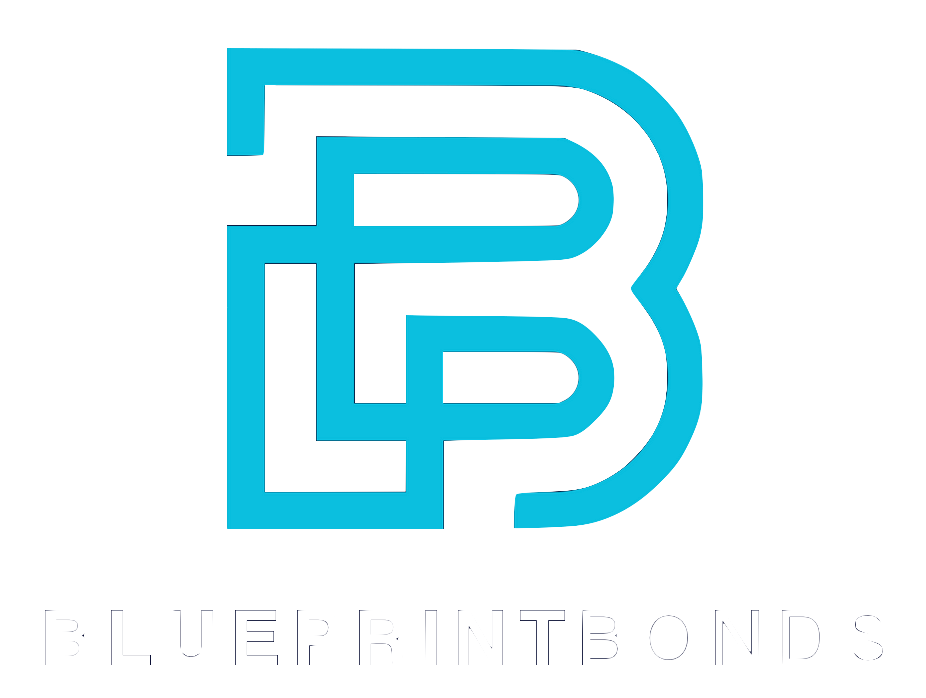The release of a lien bond is a crucial aspect of property ownership and financial transactions. Understanding how lien bonds function can save individuals and businesses from potential legal complications and financial losses. This article delves into the intricacies of lien bonds, their purpose, and the process involved in obtaining a release.
What is a Lien Bond?
A lien bond is a type of surety bond that is often used to remove a lien from a property. When a lien is placed on a property, it signifies that a creditor has a legal right to the property due to a debt owed. By obtaining a lien bond, the property owner can effectively challenge the lien and have it released, allowing for the sale or refinancing of the property. This process can be crucial for property owners who find themselves in a situation where a lien could hinder their financial options or impede their ability to transfer ownership.
Types of Liens
Liens can be classified into several categories, each serving different purposes. The most common types include:
- Mortgage Liens: These are created when a borrower takes out a mortgage to purchase property. The lender holds a lien until the loan is repaid.
- Mechanic's Liens: These are filed by contractors or subcontractors who have not been paid for work performed on a property.
- Tax Liens: These arise when property taxes are not paid, giving the government a claim against the property.
Purpose of a Lien Bond
The primary purpose of a lien bond is to provide security to the lienholder while allowing the property owner to remove the lien. This bond essentially acts as a guarantee that the lienholder will be compensated if the court rules in their favor. By posting a lien bond, the property owner can clear the title, making the property more marketable. In many cases, this can be a vital step for individuals looking to sell their homes or secure financing, as it restores their ability to leverage their property without the encumbrance of unresolved debts.
Moreover, lien bonds can also serve to expedite the resolution of disputes between property owners and lienholders. When a lien is contested, the bond provides a financial mechanism that can facilitate negotiations, as it assures the lienholder that their interests are protected while the matter is being settled in court. This can lead to quicker settlements and reduce the time and costs associated with prolonged legal battles. Understanding the intricacies of lien bonds can empower property owners to navigate these situations more effectively, ensuring they are well-equipped to protect their investments and financial futures.

The Process of Obtaining a Release of Lien Bond
Obtaining a release of lien bond involves several steps, each critical to ensuring a smooth process. Understanding these steps can help property owners navigate the complexities of lien disputes effectively.
Step 1: Assess the Lien
The first step in the process is to thoroughly assess the lien. This involves reviewing the details of the lien, including the amount owed, the reason for the lien, and the parties involved. Understanding the nature of the lien will help in determining the appropriate course of action. It's also important to gather any relevant documentation, such as contracts, invoices, or correspondence related to the lien, as these can provide context and support your case when discussing options with legal counsel.
Step 2: Consult with Legal Counsel
Engaging with a legal professional who specializes in property law is essential. They can provide valuable insights into the specifics of the lien and the implications of obtaining a lien bond. Legal counsel can also assist in negotiating with the lienholder, potentially leading to a resolution without the need for a bond. Furthermore, they can help you understand the potential consequences of the lien on your property, including how it may affect future transactions or financing options. This proactive approach can save time and resources in the long run.
Step 3: Apply for the Lien Bond
Once the lien has been assessed and legal counsel has been consulted, the next step is to apply for the lien bond. This typically involves submitting an application to a surety company, which will evaluate the risk associated with issuing the bond. Factors such as creditworthiness and the specifics of the lien will be considered during this assessment. Additionally, it may be beneficial to prepare a detailed explanation of your situation, including any steps taken to resolve the lien, as this can enhance your application and demonstrate your commitment to rectifying the issue.
Step 4: Secure the Bond
After the application is approved, the next step is to secure the bond. This usually requires paying a premium, which is a percentage of the total bond amount, and providing any necessary collateral. The bond serves as a guarantee to the lienholder that the debt will be paid, allowing the property owner to clear the lien from their property title. It’s crucial to understand the terms of the bond, including any obligations you may have in the event that the lienholder makes a claim against it. Being well-informed will help you manage your responsibilities effectively and avoid any potential pitfalls.
Step 5: Notify the Lienholder
Once the bond is secured, the final step is to notify the lienholder of the release of lien bond. This involves sending them the necessary documentation to prove that the bond has been issued and is in effect. The lienholder will then typically have a specified period to respond, during which they can either accept the bond and release the lien or contest it if they believe the bond is insufficient. Keeping open lines of communication during this phase can facilitate a smoother resolution and help mitigate any misunderstandings that may arise.
Cost of a Lien Bond
The cost of a lien bond can vary significantly based on several factors, including the amount of the lien, the creditworthiness of the applicant, and the surety company's underwriting criteria. Generally, the premium for a lien bond ranges from 1% to 15% of the total bond amount. This variability means that property owners and contractors must carefully assess their financial situation and the specifics of their project to obtain the best possible rate.
Factors Influencing Bond Premiums
Several factors can influence the cost of a lien bond:
- Credit Score: A higher credit score can lead to lower premiums, as it indicates a lower risk to the surety company.
- Financial History: A solid financial history and stability can positively impact the cost of the bond.
- Type of Lien: The nature of the lien and the associated risks can also affect the premium.
In addition to these factors, the location of the property can also play a significant role in determining the bond cost. Different states and municipalities may have varying regulations and requirements regarding lien bonds, which can influence the overall risk assessment by the surety company. For instance, properties in areas with a higher incidence of construction disputes may face higher premiums due to the increased likelihood of claims being filed.
Payment Options
Most surety companies offer flexible payment options for lien bonds. Property owners may choose to pay the premium upfront or opt for a payment plan. Understanding these options can help manage cash flow effectively. Some companies may even provide discounts for upfront payments, which can be beneficial for those who are able to pay the full amount at once. Furthermore, it's essential for applicants to review the terms of the payment plan, as interest rates and fees can vary widely between providers.
Moreover, some surety companies may offer additional services or resources to assist applicants in navigating the bond process. This can include educational materials on lien laws, access to legal advice, or consultation services that help ensure compliance with local regulations. By taking advantage of these resources, property owners and contractors can not only secure their lien bonds more efficiently but also gain valuable insights into protecting their investments throughout the project lifecycle.
How to Release a Lien Bond
Once a lien bond has been obtained, the next step is to initiate the release process. This involves several key actions that must be taken to ensure the lien is officially removed from the property.
Filing the Bond with the Court
The first action is to file the lien bond with the appropriate court. This typically involves submitting the bond along with any required documentation, such as proof of payment and a notice of intent to release the lien. The court will then review the submission to ensure all requirements are met. It is important to double-check that all forms are filled out correctly and that any accompanying documents are complete, as missing information can lead to delays. Additionally, some jurisdictions may require a filing fee, so it's wise to verify the specific requirements of your local court to avoid unexpected issues.
Notifying the Lienholder
After filing the bond, it is essential to notify the lienholder of the bond's existence. This notification should include details about the bond and a request for the lien to be released. In many cases, the lienholder may agree to the release, especially if they are assured of compensation through the bond. It can be beneficial to communicate with the lienholder directly, either through a formal letter or a phone call, to discuss the terms and address any concerns they might have. Establishing a good rapport can facilitate a smoother release process, as lienholders may be more willing to cooperate if they feel their interests are being respected and acknowledged.
Awaiting Court Approval
Once the bond is filed and the lienholder is notified, the property owner must await the court's approval. This process can vary in duration depending on the court's schedule and the complexity of the case. It is crucial to remain patient during this time, as the court's decision will ultimately determine the outcome. During this waiting period, it may be helpful to consult with a legal professional who specializes in property law. They can provide guidance on what to expect and help navigate any potential complications that may arise. Additionally, staying informed about the status of the case through regular check-ins with the court can help ensure that the process remains on track and that any necessary follow-ups are addressed promptly.

Common Challenges in the Release of Lien Bond Process
While the process of obtaining and releasing a lien bond may seem straightforward, several challenges can arise. Being aware of these potential issues can help property owners prepare and respond effectively.
Disputes with Lienholders
One of the most common challenges is disputes with lienholders. In some cases, lienholders may refuse to accept the bond or may contest its validity. Engaging legal counsel can be instrumental in resolving these disputes and ensuring that the bond is recognized. Additionally, understanding the specific terms of the lien and the reasons behind the lienholder's objections can provide valuable context. For instance, if the lienholder believes that the bond does not cover the full amount owed or lacks necessary documentation, addressing these concerns proactively can lead to a smoother resolution.
Delays in Court Proceedings
Delays in court proceedings can also pose a significant challenge. Factors such as a backlog of cases or the complexity of the lien dispute can prolong the release process. Staying in communication with the court and legal counsel can help mitigate these delays. Furthermore, property owners may benefit from exploring alternative dispute resolution methods, such as mediation or arbitration, which can sometimes expedite the process and lead to a more amicable settlement. Understanding the court's schedule and being prepared for potential delays can also help manage expectations and reduce frustration during this time.
Financial Implications
The financial implications of obtaining a lien bond can also be a concern. Property owners must consider the cost of the bond, potential legal fees, and any other associated expenses. Budgeting for these costs is essential to avoid unexpected financial strain. It is also wise to explore different bonding companies, as rates and terms can vary significantly. Some companies may offer flexible payment options or discounts for bundling services, which can alleviate some of the financial burdens. Additionally, property owners should be aware of the potential for recovering some costs if the lien is found to be invalid, which can provide a sense of relief amidst the financial stress of the process.
Benefits of Using a Lien Bond
Despite the challenges, there are numerous benefits to using a lien bond to release a lien. Understanding these advantages can help property owners make informed decisions.
Protection of Property Rights
One of the primary benefits of a lien bond is the protection it offers to property rights. By obtaining a bond, property owners can challenge unjust liens and safeguard their ownership interests. This is particularly important in cases where the lien may be based on disputed claims. The bond acts as a financial guarantee, ensuring that the property owner can contest the lien without the immediate threat of losing their property. This legal safeguard empowers owners to defend their rights against potentially frivolous or erroneous claims, fostering a sense of security in their investments.
Facilitating Property Transactions
Releasing a lien through a bond can facilitate property transactions, such as sales or refinancing. A clear title is essential for buyers and lenders, and a lien bond can help ensure that the property is marketable. This can ultimately lead to better financial opportunities for the property owner. When a lien is released, it not only enhances the property's value but also streamlines the closing process, making it more attractive to prospective buyers. Moreover, lenders are more likely to offer favorable terms on loans when they see that the property is free from encumbrances, thereby increasing the likelihood of securing financing for future projects or investments.
Reducing Legal Risks
Using a lien bond can also reduce legal risks associated with property ownership. By addressing liens promptly and effectively, property owners can avoid potential lawsuits and financial liabilities. This proactive approach can lead to greater peace of mind. Additionally, by resolving lien issues through a bond, property owners can maintain a positive reputation within their community and among business partners. A clear record of property ownership can enhance credibility and trust, which is invaluable in both personal and professional relationships. Furthermore, this strategy can deter future claims against the property, as it demonstrates the owner's commitment to resolving disputes amicably and legally.
Conclusion
The release of a lien bond is an essential process for property owners facing liens on their properties. Understanding the intricacies of lien bonds, the steps involved in obtaining a release, and the potential challenges can empower property owners to navigate this complex landscape effectively. By consulting with legal professionals and taking proactive measures, property owners can protect their rights and facilitate smoother property transactions.
In summary, a lien bond serves as a valuable tool in managing liens and ensuring that property ownership remains secure. Whether dealing with mortgage liens, mechanic's liens, or tax liens, being informed about the release process can make all the difference in achieving a favorable outcome.
Article By: Ryan Spalding
Licensed Insurance Agent & Bond Specialist
Contact Us

